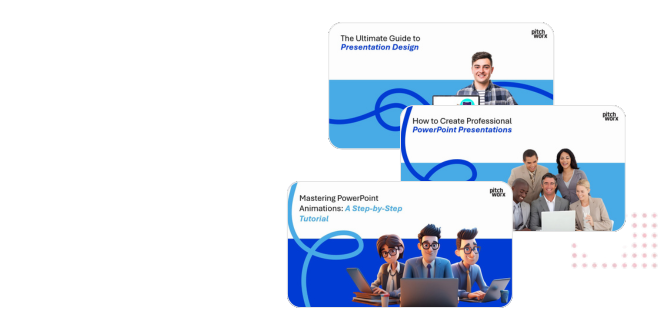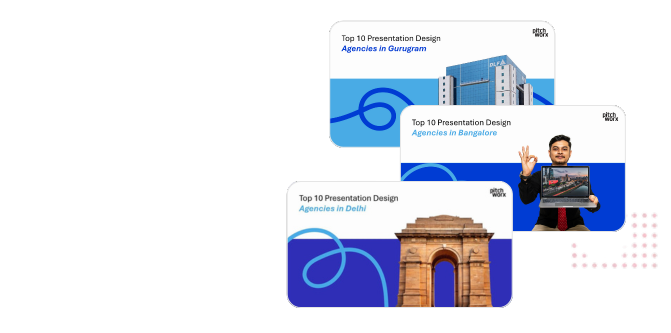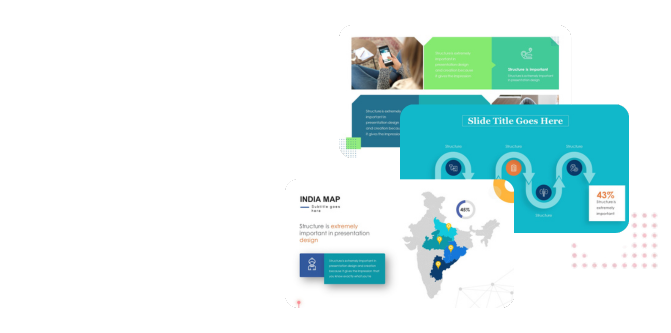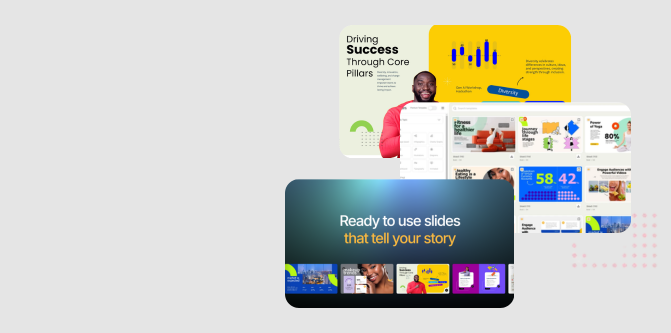Published: November 21, 2025 | Reading Time: 18 minutes | Author: PitchWorx Design Team
Table of Contents
- Introduction: Why Presentation Design is a Strategic Asset
- Secret #1: The 10/20/30 Rule (Silicon Valley’s Gold Standard)
- Secret #2: Data Visualization That Tells Stories
- Secret #3: Color Psychology for American Business Culture
- Secret #4: Typography Hierarchy That Guides the Eye
- Secret #5: The “Investor First” Slide Sequencing Method
- Secret #6: White Space as a Strategic Design Element
- Secret #7: Storytelling with Visual Metaphors
- Secret #8: Mobile-First Presentation Design
- Secret #9: Animation and Transitions (Strategic, Not Distracting)
- Secret #10: The “Boardroom Test” Design Principle
- Conclusion: Design as Strategic Advantage
Introduction: Why Presentation Design is a Strategic Asset
In 2024, U.S. startups raised an impressive $238 billion in venture capital funding, yet for every successful funding round, dozens of promising companies walked away empty-handed—not because their ideas lacked merit, but because their presentations failed to capture investor attention. The difference between securing a $5 million Series A and leaving Sand Hill Road disappointed often comes down to a single 15-minute pitch deck presentation.
Consider this: Airbnb’s now-legendary pitch deck raised $600,000 in seed funding with a simple, well-designed presentation. That company is now valued at over $75 billion. Uber’s early-stage deck, equally focused on clear design principles, helped launch what became an $80+ billion company. These aren’t just success stories—they’re proof that presentation design is a strategic business asset, not an aesthetic afterthought.
Most entrepreneurs obsess over their content—perfecting every word, refining every data point, rehearsing every transition. But they overlook the design principles that determine whether investors actually absorb that content. Your brilliant business model means nothing if your audience checks their phone by slide three.
This guide reveals ten presentation design secrets that top U.S. entrepreneurs use to command attention, build credibility, and close deals. These aren’t generic tips—they’re battle-tested strategies from Silicon Valley to Wall Street, backed by cognitive science and proven in conference rooms where millions change hands.
Secret #1: The 10/20/30 Rule (Silicon Valley’s Gold Standard)
Guy Kawasaki, legendary Silicon Valley venture capitalist and former Apple evangelist, created what’s become the most cited presentation framework in American entrepreneurship: the 10/20/30 Rule.
The Framework:
- 10 slides maximum in your core pitch deck
- 20 minutes for your presentation (leaving 10+ minutes for Q&A)
- 30-point font minimum size for all text
U.S. Case Study: LinkedIn’s Series B pitch deck in 2004 followed this exact structure, using just 11 slides to communicate a vision that secured their funding. The deck’s simplicity—clean charts, minimal text, strategic white space—allowed Reid Hoffman to tell LinkedIn’s story rather than read bullets.
Secret #2: Data Visualization That Tells Stories, Not Just Numbers
In the data-driven culture of U.S. venture capital, your pitch deck design must translate complex metrics into compelling visual narratives. According to research from MIT’s Media Lab, investors remember 80% of what they see versus only 20% of what they read.
Technical Guide to Chart Selection:
- Line Graphs: Growth trajectories, trends over time.
- Bar Charts: Comparing discrete categories, market segmentation.
- Area Charts: Cumulative growth, emphasizing magnitude.
- Infographics: Simplifying complex processes, illustrating business models.
While entrepreneurs can create effective data visualizations independently, many choose to work with a presentation design agency—a specialized firm that transforms raw data and rough content into investor-ready visual presentations. These agencies understand not just design principles, but also investor psychology, ensuring that every chart, graph, and infographic serves a strategic purpose in your funding narrative.
Secret #3: Color Psychology for American Business Culture
Color isn’t decoration—it’s communication. Understanding color psychology specific to U.S. business culture can subconsciously build trust before you say your first word.
Technical Color Framework:
- Blue (Trust, Technology, Stability): Most popular in U.S. corporate presentations. Ideal for enterprise SaaS, FinTech, and B2B platforms.
- Green (Growth, Sustainability, Finance): Use for sustainable solutions, HealthTech, AgriTech, and financial growth metrics.
- Red/Orange (Energy, Urgency, Innovation): Use sparingly for consumer apps and disruptive brands targeting younger demographics.
- Gray/Black (Sophistication, Luxury, Premium): For high-end products, enterprise solutions, and luxury market positioning.
For high-stakes Series A or Series B pitches, partnering with an experienced presentation design agency ensures your color palette is strategically aligned with investor expectations and industry norms.
Secret #4: Typography Hierarchy That Guides the Eye
Professional typography creates a visual hierarchy that guides investors through your content effortlessly.
Technical Breakdown of Text Hierarchy:
- Level 1 – Headlines (48-60pt): Slide titles, maximum 5-7 words.
- Level 2 – Subheadlines (24-32pt): Supporting points, maximum 10-12 words.
- Level 3 – Body Text (18-24pt minimum): Key points, never go below 18pt.
U.S. Font Preferences: Use modern sans-serif fonts like Helvetica Neue, Proxima Nova, or Inter for 94% of U.S. startup presentations. Serif fonts should be limited to headlines in traditional industries.
Secret #5: The “Investor First” Slide Sequencing Method
Your slide order should mirror the psychological journey of an investor making a high-risk decision.
The Investor Psychology Framework:
- Phase 1: Skepticism (Slides 1-2): Hook and Problem. Grab their attention and quantify the pain.
- Phase 2: Interest (Slides 3-5): Solution, Market Opportunity, and Product. Show why you’re the answer.
- Phase 3: Evaluation (Slides 6-8): Traction, Business Model, and Competition. Prove your execution.
- Phase 4: Decision (Slides 9-10): Team and Ask. Show why you’ll win and what you need.
According to PitchBook data, decks following this structure have a 34% higher success rate in securing first meetings.
Secret #6: White Space as a Strategic Design Element
White space—the empty areas of your slide—is your most powerful design tool. It reduces cognitive load, increases comprehension, and signals sophistication.
The 30:70 Rule:
Optimal presentations maintain approximately 30% content to 70% white space ratio. This forces clarity and directs focus to what matters most. Remember the “One Concept Per Slide” discipline: if you’re tempted to add more, create a new slide instead.
Secret #7: Storytelling with Visual Metaphors
Data gets investors interested; visual metaphors make them emotionally invested. They use familiar imagery to explain abstract concepts, creating powerful memory hooks.
Metaphors That Resonate in U.S. Business Culture:
- Sports Metaphors: For competitive positioning (chess, football playbooks).
- Journey Metaphors: For growth trajectories and product roadmaps.
- Building/Construction Metaphors: For technology stacks and platform ecosystems.
Partnering with a presentation design agency can help develop authentic visual metaphors that resonate with specific investor types and industries.
Secret #8: Mobile-First Presentation Design
A staggering 67% of investors review pitch decks on mobile devices first. If your presentation is illegible on a 6-inch screen, you’ve lost before you’ve even presented.
Mobile-Optimized Design Principles:
- Thumbnail Test: Each slide’s core message must be clear in thumbnail view.
- Single Focus Per Slide: One headline, one visualization.
- High Contrast: Minimum 7:1 contrast ratio.
- Large Fonts: 36pt minimum for headlines, 24pt for body text.
Always send a mobile-optimized PDF for initial review.
Secret #9: Animation and Transitions (Strategic, Not Distracting)
Used strategically, animation directs attention and controls pacing. The U.S. business culture values efficiency, so less is more.
When to Use Animations:
- Data Reveals: Build charts progressively to tell a story.
- Process Flows: Reveal steps in sequence.
- Before/After Comparisons: Transition from problem to solution.
Use subtle animations like Fade In/Out and set them to trigger “on click” for maximum control.
Secret #10: The “Boardroom Test” Design Principle
Your presentation must work in the worst possible viewing conditions: a bright conference room with an older projector and investors sitting 20 feet away.
Visibility Requirements:
- Text Size: 40-60pt for headlines, 24pt minimum for supporting text.
- High Contrast: Black text on white or dark blue on white is safest. Avoid gray text on white.
- Aspect Ratio: Design for 16:9, but ensure critical content is visible in 4:3.
Always test your deck with the “Three-Device Test”: your laptop, a projector, and an iPhone in bright sunlight.
Conclusion: Design as Strategic Advantage
These ten secrets are about engineering investor attention and confidence. In the hypercompetitive U.S. startup ecosystem, where only 0.05% of startups successfully raise venture capital, your presentation design is a strategic weapon.
Implementation Roadmap:
- Week 1: Audit Your Current Deck. Identify the 3-4 areas needing the most improvement.
- Week 2: Prioritize and Redesign. Start with slide count, white space, and sequencing.
- Week 3: Refine Visual Elements. Optimize data, color, and add metaphors.
- Week 4: Test and Polish. Test for mobile and projection, and add strategic animations.
For Series A and beyond, the stakes justify professional help. A specialized presentation design agency is not an expense but an investment with measurable ROI, ensuring your deck is optimized for the specific investors you’re targeting. Your idea might be revolutionary, but if you can’t present it in a way that captures attention, none of it matters. Invest in your presentation design with the same rigor you invest in your product.










